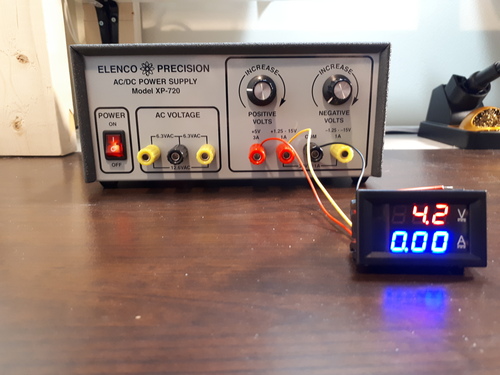OBS; miscellaneous electronics
Posted on Sun 16 August 2020 in electronics
OBS and streaming
I've been able to set up OBS Studio to output its video to a webcam. This should let me share desktops during video calls and even switch between multiple webcams. OBS Studio is used for streaming.
Getting OBS to output to a webcam requires v4l2loopback. It's a Linux kernel module that will create a virtual /dev/video device that can receive video data and make it available as a webcam feed. As far as Discord/Skype/etc knows, your stream will just be another webcam.
I was able to get v4l2loopback to work on Ubuntu 18.04 and Fedora 32. In both cases it turned out easier that expected: just git clone, make, and sudo make install. The documentation warns you about mixing kernel and kernel header versions (or Linux will "spit in your eye"), but I haven't had problems yet.
In order to use the loopback in OBS, you also need the obs-v4l2sink OBS plugin. This was easy in Ubuntu 18.04, but Fedora 32 was troublesome. On Fedora you can build it easily enough, but it won't be recognized by OBS unless its install path is adjusted. See the discussion here: https://github.com/CatxFish/obs-v4l2sink/issues/42 (I think the sed command fixed it for me.)
Voltmeter and ammeter
Last week I was looking at a DROK brand voltage and current meter, but I afterwards discovered it had a minimum measurement threshold of 6.5V. This is too high for most of my electronics. Instead I went with a cheaper little unit.

The ammeter must be connected after the load; otherwise it doesn't measure current properly. Rather than integrate it into the power supply, I think I'm going to put the meter in a box and use it in-between the supply and the device/circuit. I can then just move it around as I want, like a multimeter.
I should also buy some of those USB multimeters. With some bodging they could work to measure the current draws of Arduinos.
Banana plugs and alligator clips
These are surprisingly hard to find (cheap) online. They'd be nice to have for binding posts.
Small alligator clips are also handy. They're small enough to clip either around the back of the post, or through the hole in the front.
Powering your old cellphone directly
My old phone's battery was dead, so I powered the phone directly and succeeded. This was a bit interesting. It's something that would be hard to do without a variable power supply, a multimeter, and some fine clip-on test leads.

The neat thing about this is that the phone battery isn't meant to operate at 3.8V as I first thought. With a 3.8V supply the phone will power up but immediately power off: it thinks the battery is critically low. The phone will only be happy at 4.0V to 4.3V, with the higher voltage registering as a "full" battery.

The phone was easy to handle thanks to the good clip-on leads. Sadly, there was nothing important on the phone itself.